
by Stephen Greer | Apr 14, 2022
We all must begin somewhere in horticulture, including growing yummy vegetables of your own to enjoy and share. This activity, or is it passion, has a long colorful history while most of the time provides an exceptional food source. It can be a bit daunting the first time you try and maybe even the others to follow with determining what, when, where and how to plant for a future harvest.
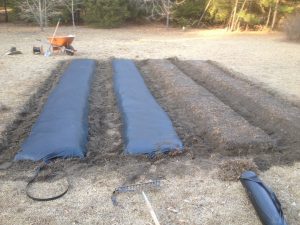
Raised Bed Vegetable Garden with Drip and Black Plastic. Photo Credit: Stephen Greer, UF/IFAS Extension – Santa Rosa
Selecting that convenient site in full sun easy with access to check on the plants progress. Things you will need to consider are the number of hours of direct sun the garden area will receive. Most garden vegetables will need at least eight hours of sunlight. Many of the leafy greens can be grown with less than eight hours with the least amount of sun at six hours. All others will need eight or more hours of sunlight. Water is a critically important part of successful vegetable garden. Too little water and the plants will not survive well and produce little and too much will reduce or end plant production. A general rule is one inch of water a week during the growing season. This can come from rain or irrigation and likely is a combination.
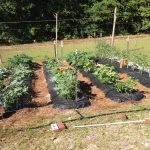
Mid-Spring Production with Managed Irrigation. Photo Credit: Stephen Greer – UF/IFAS Extension – Santa Rosa
Planning your garden before doing anything else is critically important. Take out a paper and pencil and sketch out how you want to plant your garden and what you want to grow. Start by drawing rows and labeling each row. Think about spacings between plants in the rows and between rows. Do you plan to plant everything in the ground, raised beds or on a trellis? More effective space utilization can occur by planting two- or three-foot-wide beds to plant multiple narrow rows that can be managed and harvested from both sides of the bed. Some plants to think about growing this way are leafy greens such as lettuce, kale, onion and others.
Going vertical to grow vine type plants like beans, cucumbers, early spring peas and others can be a fun part of gardening. This type of gardening allows for more space use over the same ground area. Other plants can be grown in the same bed depending on the light.
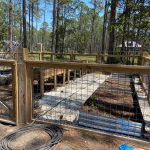
Multiple Types of Raised Beds. Photo Credit: Stephen Greer, UF/IFAS Extension – Santa Rosa
If you have interest in growing with raised beds, there are a number of materials that are used to build the beds. First do not use old railroad ties as they will leach chemicals into the soil that the vegetables can possibly take up or contaminate your soil. I have seen all kinds of creative materials used including cedar wood, plastic boards or preformed beds, even old whiskey barrels with legs built under. Do not forget all kinds of planting containers are available in the marketplace. Make sure there are drain holes in the bottom to allow the water to properly move through.
This is just the beginning of vegetable gardening. Other things to plan involve when to plant, what to plant, what is the budget, use seeds or transplants, depth of planting, watching for plant pests, harvest, storage and so on. Enjoy your gardening adventure!
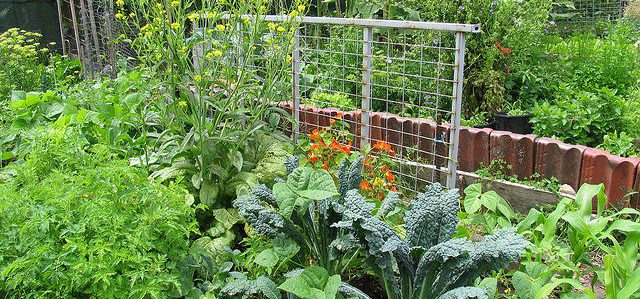
by Matt Lollar | Jan 6, 2022

A mixed vegetable garden. Photo Credit: eXtension.org.
It’s never too early to start thinking about your spring vegetable garden. Have you ever wondered how much it costs to grow your own vegetables? Does it cost less to grow your own vegetables or buy them from the grocery store or farmers market? A number of factors are involved with answering these questions and budgeting for your home garden.
Materials
The materials used are specific to your own vegetable garden. If you do everything by hand you may need a hoe, rake, and spade along with a number of other tools you can use from year to year. When budgeting for you garden you would need to think about the life expectancy of these tools. Let’s say a $20 rake lasts for 10 years. In that case, you would budget $2/year ($20 ÷ 10 years = $2/year) for the rake. This might also be the case with a bag of fertilizer. You may buy a 50 pound bag of fertilizer and use half the bag in year one and the other half in year two, so the cost of the fertilizer would be cut in half for your yearly budget. Other materials may be purchased for just one growing season such as pine straw for weed suppression or you may buy only enough seeds for the season.
Labor
A lot of work goes into growing your own vegetables. If you have the time and enjoy gardening then you may choose to charge yourself nothing for your work. However, from a cost analysis perspective you may want to put a value on your work. This will give you a better comparison to buying vegetables.
Budgets
Of course you could create your own budget based on all the costs that go into gardening. But why do that, when it’s already been done for you. The UF/IFAS Costs and Benefits of Vegetable Gardening publication includes a Microsoft Excel Cost Workbook to help answer some of these cost questions. This budget template is customizable, so it’s important that you consider all the costs for your vegetable garden. If you are looking for more detailed crop budgets, there are a lot of North Florida Enterprise Budgets available from UF/IFAS.

by Daniel J. Leonard | Apr 22, 2021
With the traditional planting date of Good Friday behind us, the home tomato gardening season in the Panhandle is in full swing. While tomatoes are the most persnickety veggie we grow, there are several practices you can adopt to help you succeed: selecting an adapted variety; regularly scouting for insects and disease; and watering and fertilizing appropriately. However, the most overlooked practice for success gardeners can adopt is proper pruning.
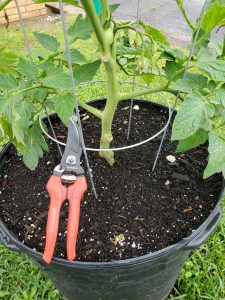
‘Big Beef’ Tomato with lower leaves removed. This is an excellent disease reduction practice. Photo courtesy of Daniel Leonard.
Correct pruning does a couple of positive things for tomatoes. First, it reduces the incidence of disease by preventing leaf contact with the soil, opening the interior of the plant, and allowing better airflow. This is important as many plant pathogens reside in the soil and only need a splash of water to travel onto plant leaves. Also, densely foliaged plants trap warm, moist air in their canopies, creating a perfect environment for disease to flourish. Letting the plant canopy “breathe” through pruning prevents that negative environment from forming! Second, correct pruning of “suckers” (extra growth points that can develop into shoots) helps tomato plants develop optimum yield and fruit quality. By removing suckers, more water, nutrients, airflow, and light are directed to the main stems, where the majority of tomato fruit production occurs. Failing to remove suckers (especially on indeterminate varieties) can result in reduced yields, increased disease, and generally messy plants!
With the reasons for pruning tomatoes established, the next step is learning exactly what to prune and how to do it in a sanitary matter.
- Get rid of any foliage that could encounter the soil, generally all leaves occurring on the lower 12-16″ of the plant. All kinds of nasty tomato destroying diseases, like Early Blight and Bacterial Leaf Spot, reside in the soil and are just waiting to be splashed onto your plants – don’t let that happen.
- Determine how many primary shoots you want your plant to have. Leave enough lower suckers to achieve that number (generally just one, two, or three as more than 3 primary stems gets hard to manage), and prune or pinch out all the rest. To prevent stress from pruning, be diligent in removing suckers when they are still small, 2” or less.
- Always clean and disinfect your pruners before making a cut on a tomato plant. This is best accomplished by rinsing the blades with warm soapy water, drying, and following with by a quick alcohol spray. A 10% bleach solution will also work, but if not thoroughly rinsed after, bleach can corrode pruner blades and other working parts. If you make cuts on a plant that appears diseased, repeat the sanitizing process before you begin pruning another plant as “dirty” pruners are an easy way to spread pathogens in the garden.
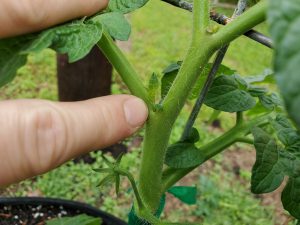
Developing vegetative “sucker” that will need to be removed. Photo courtesy of Daniel Leonard.
While tomatoes are indeed a difficult vegetable to grow, learning to prune them correctly will greatly help to make this a successful season. If you just keep leaves off the ground, suckers pinched, and pruners cleaned, you’ll be well on your way to less disease, prettier plants, and more tomatoes to pick. For more information on growing tomatoes and any other horticultural topic, please contact your local UF/IFAS County Extension office. Happy Gardening!
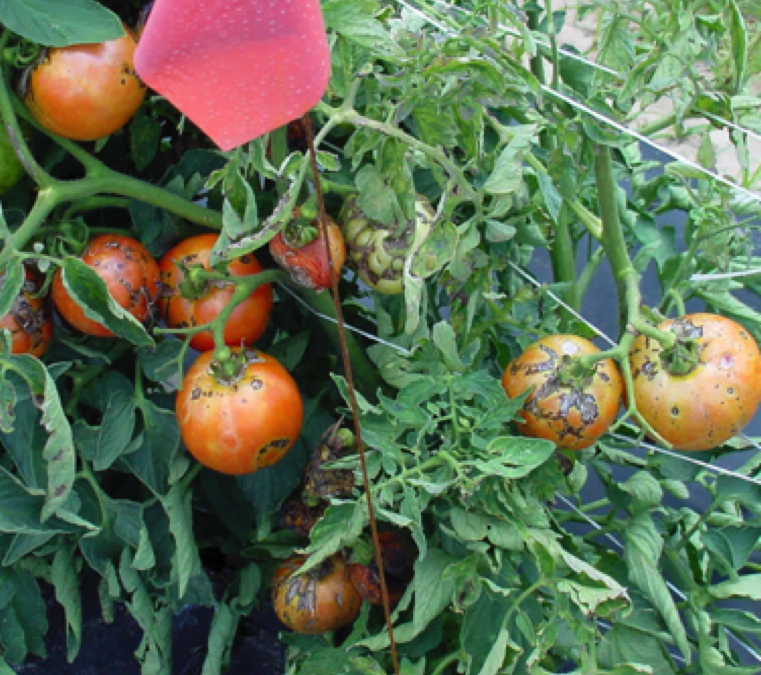
by Matthew Orwat | Feb 25, 2021
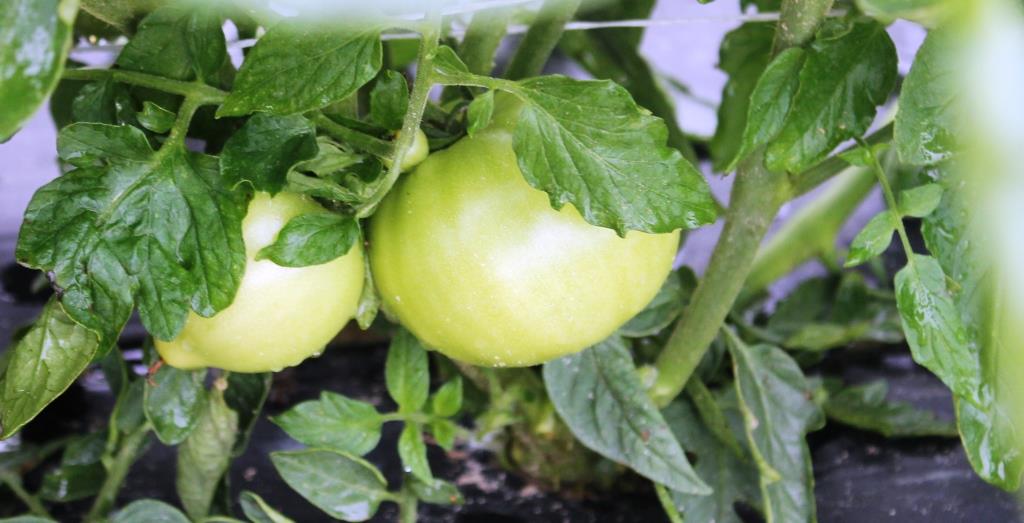
Tomatoes ripening on the vine – Image Credit Matthew Orwat UF/IFAS Extension
It is late-February, so the spring growing season is just around the corner. Now is the time to be thinking about which tasty tomatoes you want to plant in your home garden! Although tomatoes are a favorite kitchen staple, they prove challenging to grow in the Florida Panhandle climate.
While many tomato diseases can kill plants, damage fruit, and reduce yields, genetic resistance or tolerance to select diseases exist. The following are three of the most common diseases and viruses home gardeners face, for which resistant and tolerant varieties exist.
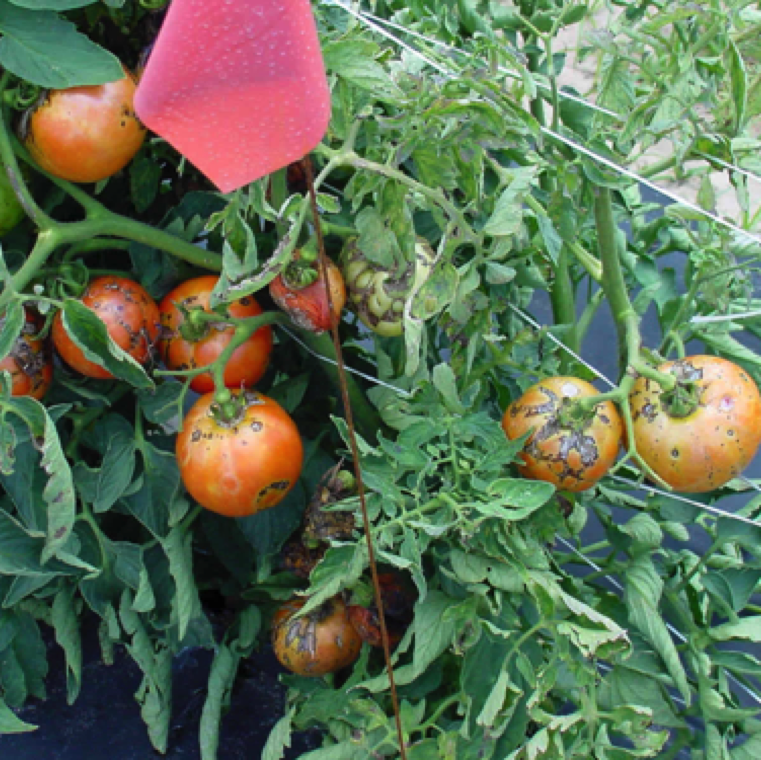
Tomato spotted wilt affects tomatoes, and numerous other vegetables, ornamentals, field crops and weeds. The disease can cause significant yield losses of tomato. Image Credit UF/IFAS Plant Pathology UScout Site
Tomato Spotted Wilt (TSW) is a viral disease which is transmitted by thrips, a species of insect that is very small and not always visible when checking the garden for insect pests. They love to feed on the sugary juices of the tomato flowers, and while feeding, they have the opportunity to transmit the virus through their piercing and sucking mouth parts. Lots of different symptoms may occur with TSW. Initially growers will notice light or dark brown spots on leaves of affected tomatoes, next wilting or stunting will occur, along with brown or purple streaks on the stems. Finally, fruit will exhibit unsightly brown rings throughout. The good news is that home gardeners can get a head start on this disease by planting resistant cultivars. When shopping for seed or transplants, growers should look for plants listed with the codes TSW or TSWV, because these have demonstrated resistance to Tomato Spotted Wilt Virus.
Another viral disease often found in the tomato garden is Tomato Yellow Leaf Curl (TYLC) Virus. TYLC first appeared in Miami in 1997 and was brought to Florida by infected whiteflies. Much like TSW, TYLC is spread from plant to plant by feeding whiteflies. As the name indicates, TYLC symptoms include curled leaves and stunted growth. Infected plants produce little to no fruit. Strategies to reduce the possibility of virus transmission to the garden include reducing the population of weedy plants, which may harbor whiteflies. Fortunately, resistant cultivars are available in plant catalogs, and are denoted by TYLC to indicate resistance.
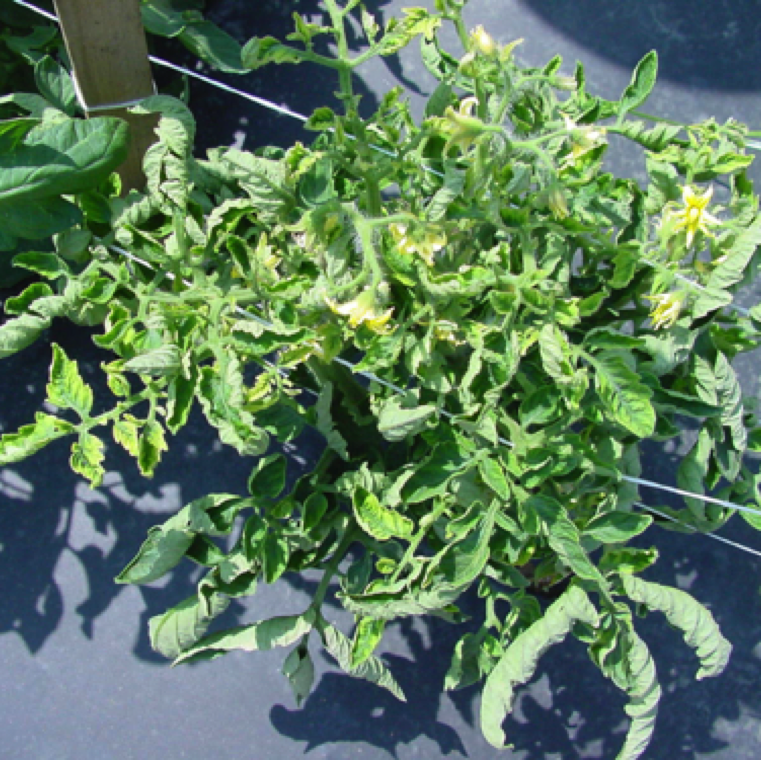
Spread of TYLC is by the feeding of TYLCV infected adult whiteflies. Mechanical or seed transmission is not known to occur. Upward curling and yellowing of the leaves is an early symptom. Credit: UF/IFAS Plant Pathology UScout Site

Blighting of leaves and wilting of part or entire plant can expose fruits to sunscalding thereby further affecting yield of affected plants in production. Credit: UF/IFAS Plant Pathology UScout Site
Fusarium Wilt is one of the oldest diseases to affect tomatoes in the state of Florida and is caused by the fungal pathogen Fusarium oxysporum f.sp. lycopersici races 1, 2, or 3. This pathogen is often present in regional soils and moved by wind. Once it enters the roots of tomato plants, fusarium wilt proliferates and clogs the vascular system, much like a clog in the plumbing of a building. Thus, the primary symptom is the wilting of the plant, which will first be noticeable on hot days, despite adequate irritation. Once infected, there is no cure, and infected plants should be removed and destroyed to stop the spread. The good news is that resistant cultivars are available to the various fusarium races. They are usually denoted as F-R 1, 2, or 3 in seed catalogs. Additionally, look for plants labeled VFN. These cultivars are resistant to a different kind of wilt, called verticillium, as well as fusarium and nematodes.
Fortunately, the UF / IFAS publication “Tomato Varieties for Florida—Florida “Red Rounds,” Plums, Cherries, Grapes, and Heirlooms” by Monica Ozores-Hampton and Gene McAvoy has provided us with a handy chart of tomato varieties with disease resistance. Codes in the columns indicate disease resistance to specific pathogens. While there is no single tomato variety resistant to all possible disease pathogens, planting different varieties with several different types of resistance will allow growers to hedge against attack by a number of potential disease problems. Some of the more common disease resistant tomato varieties planted in this area are ‘Quincy’, ‘Bella Rosa’, ‘Amelia’, ‘Tasti-Lee’, ‘BHN 602’, and ‘Volante’.
For a further look at the various diseases of tomato, the EDIS publication “A Series on Diseases in the Florida Vegetable Garden: TOMATO” offers more detail. Another resource UF/IFAS offers for disease diagnosis is the NFREC U-Scout website. U-Scout provides information on more than 40 potential disease issues in tomato. Additionally, any plant disease can be diagnosed through your County Extension Office or by submitting samples to the Plant Pathology Clinic, at the North Florida Research and Education Center, for only $30/sample for basic services.
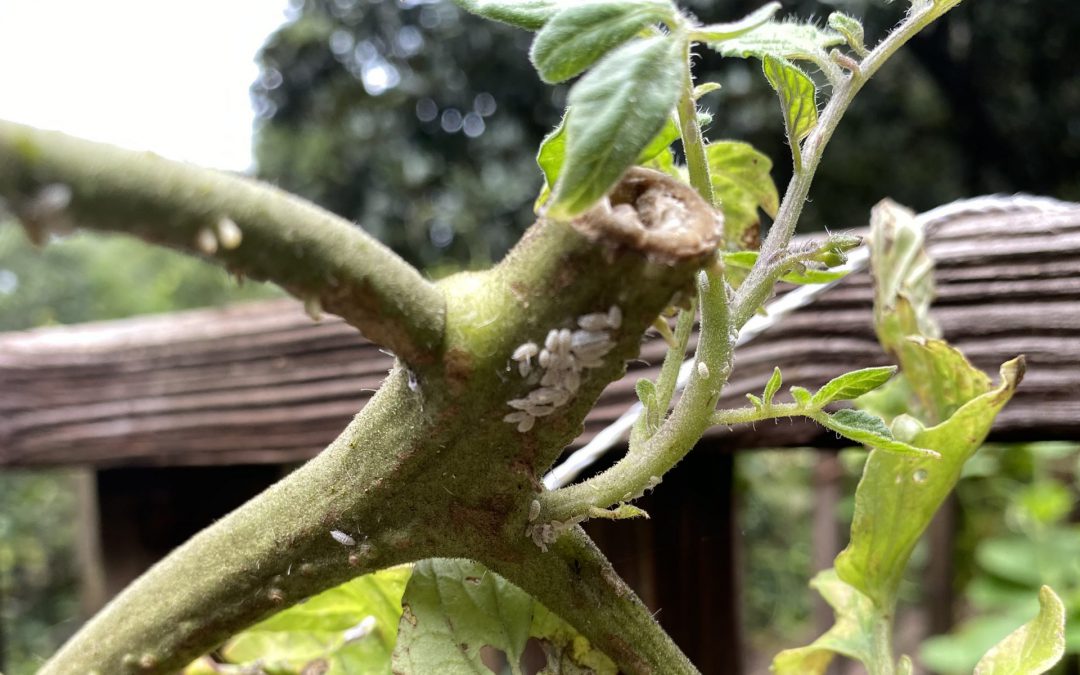
by Matt Lollar | Aug 24, 2020
A common question for gardeners at the end of the season is if one should till the soil or use no till practices. Opinions vary regarding this question, even among Extension Agents. However old crops harbor insects, both good and bad. This phenomenon was noticed on some recently cut back tomato plants. The intention was to cut the leftover spring garden tomatoes back to encourage fall production. Instead, a host plant for mealybugs was provided.

Mealybugs on a tomato plant. Photo Credit: Matt Lollar, University of Florida/IFAS Extension – Santa Rosa County
Mealybugs are soft-bodied insects that possess a covering of flocculent, white, waxy filaments. They are about 1/8 inch in length and usually pinkish or yellowish in color. Mealybugs have piercing-sucking mouthparts which they use to siphon fluids from the leaves, stems, and sometimes roots of many ornamental and vegetable plants. Mealybug damage produces discolored, wilted, and deformed leaves.
One very common example of an insect pest likely to claim residence in your garden’s crop residue, are squash bugs. They like to overwinter on squash, cucumber, and other cucurbit crop residue. If you choose to not till your garden and leave a portion of last seasons crop in your garden, then you should consider applying an insecticide to your spent crop at the end of the season. A product containing a pyrethrin or pyrethroid as an active ingredient would be a good broad spectrum insecticide to control any pest that may reside on plant residue. More information on pyrethrins and pyrehtroids can be found at the EPA webpage: Pyrethrins and Pyrethroids. If you choose to apply an insecticide, it is important that you follow the information on the label regarding pollinator protection. Another option is to plant a trap crop on the edge of your garden to help attract pest insects away from your desired crops. More information on trap crops can be found in the EDIS Publication: Intercropping, Pest Management and Crop Diversity.
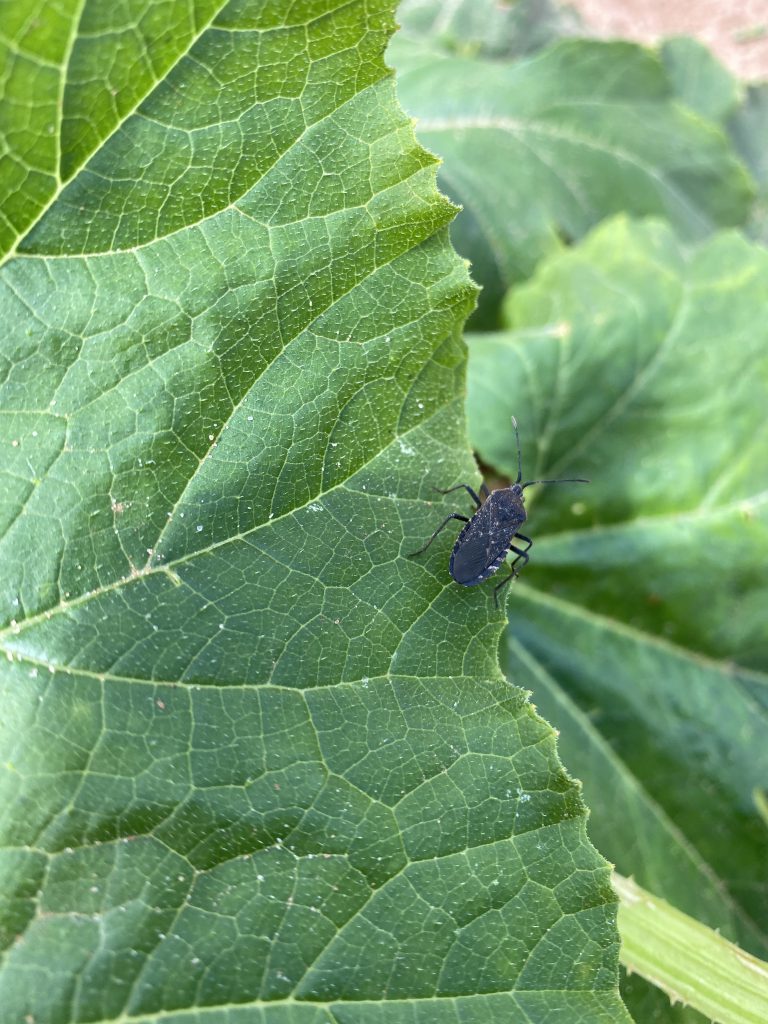
An adult squash bug on a zucchini leaf. Photo Credit: Matt Lollar, University of Florida/IFAS Extension – Santa Rosa County
So the answer to the till or no till question is…it depends. It is really up to the gardener. Yes, the residue from crops will add nutrients and organic matter to your soil, but it could also increase pest pressure in your garden. If you don’t plan to remove crop residue and don’t plan to till, then keep an eye out for what could be hiding in your garden.

















